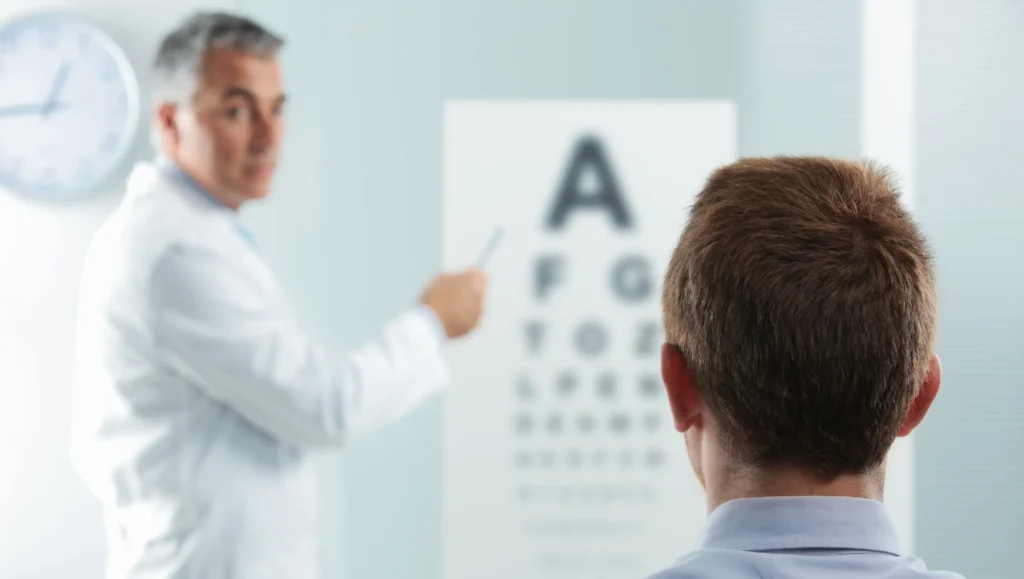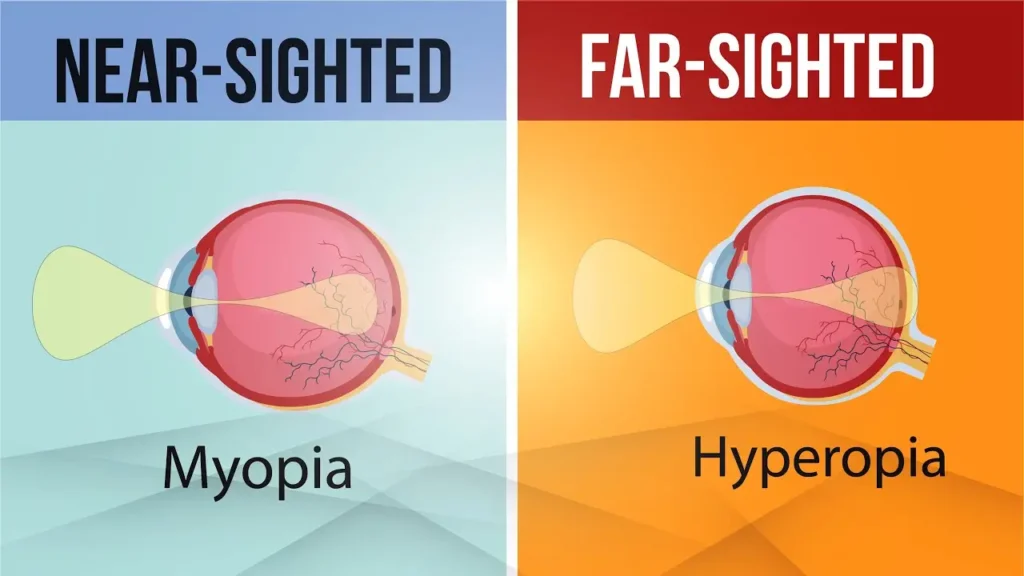Key Points
- 20/70 vision means you can see at 20 feet what someone with normal vision can see at 70 feet.
- Common causes include refractive errors like nearsightedness or farsightedness, age-related changes, eye diseases, injuries, and genetic factors.
- Corrective options include prescription glasses, contact lenses, refractive surgery, and vision therapy.
- While not legally blind, individuals with 20 70 vision may still face challenges and benefit from corrective measures.
- Consult an eye care professional for personalized treatment and management of 20/70 vision.
What is 20/70 Vision?
In optometry, visual acuity is measured using the Snellen chart, where 20/20 vision is considered normal. If you have 20/70 vision, you can see at 20 feet what a person with normal vision can see at 70 feet. In simpler terms, objects appear blurry unless they are relatively close to you.
Causes of 20/70 Vision

The causes of 20/70 vision can vary and are often associated with underlying issues affecting the eye’s ability to focus light correctly onto the retina. Here are some common causes:
Refractive Errors
Refractive errors occur when the shape of the eye prevents light from focusing directly on the retina. The most common refractive errors are Myopia, Hyperopia, and Astigmatism.
Age-Related Changes
As we age, changes occur in the structure and function of the eyes, increasing the likelihood of vision problems. Conditions like presbyopia, cataracts, and macular degeneration can reduce visual acuity, including 20 70 vision.
Eye Diseases
Various eye diseases can affect visual acuity and lead to 20/70 vision or worse. These may include Cataracts, Glaucoma, and Macular Degeneration.
Genetic Factors
Genetic predispositions can influence the development of refractive errors, eye diseases, and other vision-related conditions. Individuals with a family history of certain eye disorders may have an increased risk of experiencing 20 70 vision or similar visual impairments.
Curious about 20/30 vision? Find out what it means for your sight.
What Does 20/70 Vision Look Like?
Imagine trying to read a road sign from a distance or deciphering a small print on a page—individuals with 20 70 vision often struggle with tasks that require clear distance vision. Objects appear blurry or out of focus, making daily activities challenging without corrective measures.
Can 20/70 Vision Be Corrected?

Yes, 20/70 vision can often be corrected with appropriate interventions provided by eye care professionals. Here are several methods commonly used to correct 20 70 vision:
Prescription Glasses
Prescription eyeglasses are a common and effective solution for correcting refractive errors that cause 20/70 vision. The lenses in the glasses are designed to compensate for the specific refractive error in the eyes, allowing light to focus correctly on the retina and improving visual acuity.
Contact Lenses
Contact lenses offer an alternative to eyeglasses for correcting 20/70 vision. They sit directly on the eye’s surface and can provide clear vision without the need for bulky frames. Contact lenses come in various types, including soft, rigid gas permeable, and hybrid lenses, to accommodate different preferences and eye conditions.
Refractive Surgery
Refractive surgery procedures such as LASIK (Laser-Assisted In Situ Keratomileusis) and PRK (Photorefractive Keratectomy) can permanently reshape the cornea to correct refractive errors like myopia, hyperopia, and astigmatism. These surgeries are often suitable for individuals with 20/70 vision who desire reduced dependence on glasses or contact lenses.
Learn how to cope with 20/40 vision in daily life on any of the heathcare blogs in USA.
Is 20/70 vision nearsighted or farsighted?

20/70 vision can be either nearsighted (myopic) or farsighted (hyperopic), depending on the underlying refractive error causing the impairment.
Nearsightedness (myopia)
Individuals with myopia have difficulty seeing distant objects clearly but can see nearby objects more clearly. In the case of 20/70 vision, nearsighted individuals can see at 20 feet what a person with normal vision can see at 70 feet.
Farsightedness (hyperopia)
Farsighted individuals have difficulty focusing on nearby objects, but distant objects may appear more clear. However, with 20 70 vision, individuals may have difficulty seeing objects clearly at both near and far distances.
20/70 Vision Prescription
If you’re diagnosed with 20/70 vision, your optometrist or ophthalmologist will prescribe corrective lenses tailored to your needs. These lenses are designed to compensate for the refractive error in your eyes, allowing you to see more clearly at various distances.
20/70 Vision Simulator
A 20/70 vision simulator is a valuable tool that can help individuals understand and experience how the world appears to someone with 20 70 vision. Some online simulators can provide a simulated view of the world through the eyes of someone with this level of visual acuity.
20/70 Vision Example

To put things into perspective, imagine looking at a familiar scene through a foggy window—details are obscured, and colors appear muted. This analogy captures the essence of the 20/70 vision and highlights the importance of seeking timely treatment to enhance visual clarity and quality of life.
Can You Drive with 20/70 Vision?
Driving with 20/70 vision may be legal in some jurisdictions with the aid of corrective lenses, but it ultimately depends on individual circumstances and local regulations. It’s crucial to prioritize safety and consult with your eye care provider and relevant authorities to determine if you meet the visual requirements for driving.
Conclusion
In conclusion, understanding 20/70 vision empowers you to take proactive steps to care for your eyes and seek appropriate treatment when necessary. Whether dealing with refractive errors or eye diseases or simply wanting to maintain good eye health, regular eye exams and adherence to your eye care provider’s recommendations are paramount.
Are you looking for makeup tips for Honey Colored Eyes? Read Here.
FAQs
Does 20/70 vision need glasses?
Yes, individuals with 20/70 vision often benefit from wearing glasses to correct their refractive errors and improve visual acuity. Glasses can help bring objects into sharper focus and enhance clarity for activities like reading, driving, and watching television.
Is 20/70 Vision legally blind?
No, 20 70 vision does not meet the criteria for legal blindness in most jurisdictions. Legal blindness is defined as having a visual acuity of 20/200 or worse. While 20 70 vision indicates reduced visual acuity, it does not typically meet the threshold for legal blindness.
How Bad is 20/70 Vision in One Eye?
While having 20/70 vision in one eye can present challenges, the human visual system is remarkably adaptable. However, it’s essential to address any vision discrepancies promptly to prevent further deterioration and maintain binocular vision for optimal depth perception and visual comfort.




